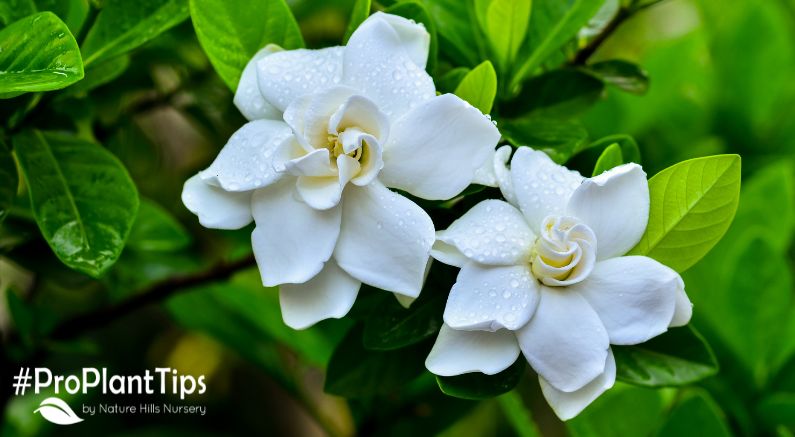One would think that if you googled summer a picture of a Gardenia should come up. In the dictionary, if you looked up the word summer there would be a description of the fragrance of a Gardenia flower. Gardenia flowers have a sweet, heady, fragrance that really just says summer. That is why everyone wants to have Gardenias in their landscape, as cut flowers, and as popular bridal bouquets. The foliage is deep, dark, shiny green and evergreen, wow!
How Do I Use Gardenia Plants?

Did you know there are over 250 different species of Gardenias? That means one for every situation. Most people buy Gardenias so they can smell the flowers. That translates to using them close to where you will be spending time in your home or landscape. Walkways, front entrances, patios, and let's not forget foundation plantings so when your windows are open you can smell them. They make great smaller hedges with that incredibly elegant evergreen foliage so even with not bloom, they rock. Keep Gardenia plants up close and personal by growing some in containers that can be moved to where you are.
What Is the Best Way to Care for Gardenia Plants?

It seems the best way to keep Gardenia plants happiest is to be sure their soil pH is lower (a bit more acidic). Our growers make sure the plants you get are going to be shipped with soil that has a lower soil pH to insure great health of the plants. It is a great idea to keep your Gardenia plants happy by using an Azalea or Camelia fertilizer (or other acid liquid fertilizer) in March to maintain healthy plants with dark green foliage color. Another application of fertilizer 4-6 weeks after the spring application will really help the flower power. Keep in mind that Gardenia plants love even moisture (meaning they should not dry out, or they should not sit in water). Consistently even moisture, with a well-drained soil well keep them happy and keep the flowers coming. They are very shallow rooted so limit digging around the base of the plants, plant them a bit high, and use a good organic mulch like shredded bark to keep the soil evenly moist and prevent weed pressure. It may seem a bit fussy, but the wildly handsome plants sport the most incredible flowers with the best fragrance you can find anywhere. A regular spring feeding of a good acid fertilizer, and even moisture, and a sunny location will keep Gardenias happy.
Pruning Is Simple and Not Excessive
Basically, removing the flowers as they fade (as they transform from a pure sparkling white, to a not so pretty - brown). Removing spent flowers and shortening up any wild new growth to keep everything in check is an easy chore really. If you are using Gardenias as a more formal hedge, or a bit more natural in habit, remember that all pruning needs to be complete by late July to allow next year's flower buds to form and develop. Young plants may need some help training new growth inline as the plants mature.
Gardenia Plants Are Typically Hardy From Zones 7-9

Nature Hills has done our best to offer you plants that work out beyond these zones and have come up with one that is hardy as low as zone 6, and another that works way up into zone 11. Check out the selections that our nurseries are growing. Flowering typically starts in May and will continue for weeks, and many will produce another flush of flowers later in summer. It is imperative that pruning cease by late July or early August for keeping those plants producing flowers for the next season.
Happy Planting!


